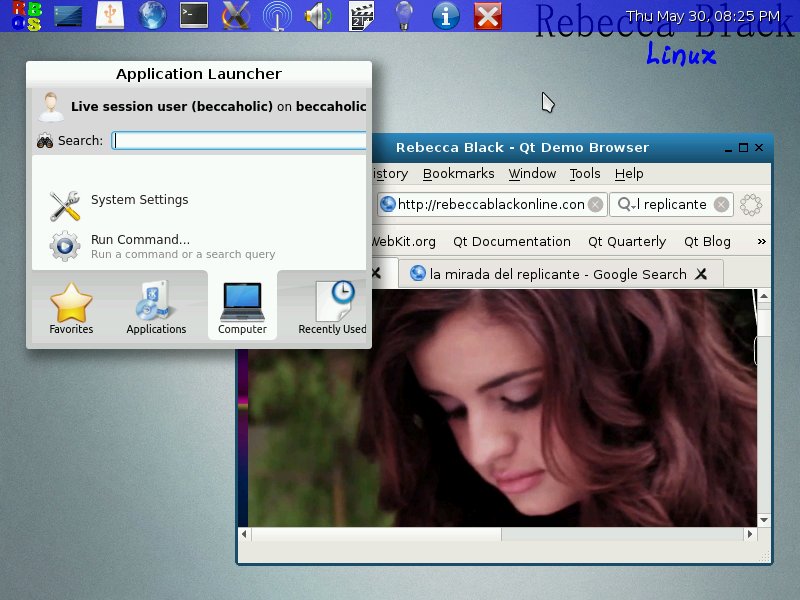I occasionally see love for niche small distros, instead of the major ones…
And it just seems to me like there’s more hurdles than help when it comes to adopting an OS whose users number in the hundreds or dozens. I can understand trying one for fun in a VM, but I prefer sticking to the bigger distros for my daily drivers since the they’ll support more software and not be reliant on upstream sources, and any bugs or other issues are more likely to be documented abd have workarounds/fixes.
So: What distro do you daily drive and why? What drove you to choose it?
Linux culture is about freedom of choice and movement. Any project can be forked, tweaked, expanded, or outright overhauled by anybody with the know-how in order to meet specific use cases. And those use cases are often the same as other’s use cases. But in most cases, they are still rooted in the project they forked from. I.E, any guide that applies to Ubuntu is likely going to apply to Pop!_OS or Mint, since they’re based on Ubuntu. So there’s rarely a downside to niche distros, because you can have something that’s close enough to a popular distro but that caters to your unique needs and wants.
For me, for example, I use Nobara. It’s rather niche and in most cases, it either works beautifully for you, or it doesn’t work at all, honestly. But it’s based on Fedora, so any guide for Fedora is likely to apply to Nobara. I get all the benefits of being on Fedora with tweaks and patches that make my gaming experience much more stable. And quite frankly, Nobara has made my rig run the best it ever has.
Debian, I got tired of things breaking in arch and even in fedora. I learned a lot but in the end, I just got tired of it.
How is Debian a niche distro?
oh, my bad I misunderstood the question 😅
I use guix because, while it has a small community, the packaging language is one of the easiest I’ve ever used.
Every distro I’ve tried I’ve always run into having to wait on packages or support from someone else. The package transformation scheme like what nixos has is great but Nixlang sucks ass. Being able to do all that in lisp is much preferred.
Plus I like shepherd much more than any of the other process 0’s
As a nix user, guix looks legit nice but it took me until 2 days ago to actually find community projects made for guix(https://whereis.みんな/) . Sometimes I just wish they used the same store and daemon as nix so that nix packages can work as guix dependencies and vice versa.
(Also major thing stopping me from using guix is I don’t get service types at all, let alone how you’d define your own service :( )
I’m using RebeccaBlackOS because it finally utilizes Wayland’s capabilities fully.




Lmao got worse as I scrolled down.
But xwayland is impressive. I’ve been using i3 but might switch to sway. The xrandr --scale command makes things too fuzzy.
I would totally run RebeccaBlackOS or HannahMontannaOS in a vm
The distros are very different. HM is just Ubuntu with a theme.
RB is, to my knowledge, the only distro built around Weston, Wayland’s reference compositor. It doesn’t include any Rebecca Black theming, it’s just called that cause the distro’s maintainer is a fan of hers.Ah ok, good to know
Way back in the day we’d download Britney Spears and My Little Pony™ distros. Times change, I guess.
It’s Thursday…what the hell are you doing!!! You’re going to break the Internet!!!
Finally, an OS to rival HannahMontannaOS
Breathtaking!
These days, it is totally feasible to have the best of both worlds with a niche distro that is exactly what you want and Distrobox with another distro to easily bring in any software that you miss. Distrobox totally solves the compatibility problem.
For example, you could have a MUSL based distro like Alpine or Chimera Linux as your host OS. Need software that does not run on MUSL? Just install a stripped down Debian image on Distrobox and “apt install” whatever you like.
A few weekends ago ( just for fun ), I installed Red Hat 5.2. Not RHEL 5, real Red Hat 5.2 from before the Fedora days. My idea was to build Podman and Distrobox on it so that I could get access to the current Arch Linux repos ( and AUR ). I got a bit lost in dependency hell and did not quite get there but I was close. I might try again sometime.
Just saying, I’ve never had a virus with Temple OS.
TCPIP stacks hate this one trick
Actually lol’d
Debian for ages, now Gentoo, Slackware and occasionally Devuan. Not really niche i’d say…
Because i like choice and flexibility.
Generally, those people are experienced users that know exactly what they want out of a distro and don’t really need help for anything. Those distros usually do a few things that the user is seeking.
For example, for some people, typing their thesis in LaTeX using emacs is the better workflow. To any average person that sounds insane when Microsoft Word is so easy to use and does the job just fine. But they enjoy it, it works for them, paper gets written, everyone is happy.
Distributions are a spectrum between novice users and expert users. Some people want to put the USB in and be good to go. Some people want a very precise setup for very specific needs.
You may ask, why not start with Ubuntu/Mint/Pop and remove what you don’t like? Well, it’s much easier to start with a blank slate than making one by chopping everything out. For my particular use case, I moved to Arch in big part because I got tired of the mainstream distros getting in my way, and wanted to start the other way around and only install and configure what I want, the way I want it. So Arch for me.
I know experienced users that really don’t care about messing around and are happy with how it runs out of the box and are happy with the development environment provided by something like Ubuntu/Fedora.
And then there’s my box which is a NAS, a workstation, a media PC for the TV, a build server, and a few other things, and it’s all dynamically reassignable. Friend can pick up the controller in the TV room and a GPU gets assigned to it and starts up Steam in Deck mode on the TV, while I can still do my stuff and game on the workstation side for local multiplayer. If the game needs a server, no worries, it’s a kube node, I can temporarily transfer the server locally and back on one of my real servers. Guest needs a PC? Sure, take this monitor and this keyboard, here’s an ephemeral Windows install. Sure, I could probably twist Ubuntu into doing all that, but it’s one hell of a lot easier starting from scratch.
Would you explain better you set-up? At least a reference to the underlaying system. Is it kubernetes?
It’s a Threadripper system which effectively behaves like two CPUs and loads of coree, two GPUs, one dedicated to my desk for the monitors, and the other one can be reassigned freely with VFIO to be a few different things. The TV is connected to that GPU. Storage is all ZFS.
- One VM is a kube node to run stuff on that GPU
- One VM is the media center / gaming stuff
- Technically I have a Windows and Mac VM too but I practically never use them.
When the second GPU isn’t attached to a VM, I can also use it on the host with DRI_PRIME. The host is also a kube node, so I can also run some (modest) AI stuff there too.
The rest is random glue scripts like detecting when the controller connects and shuffling VMs around on that signal. The kube stuff is brand new, half the things are just regular docker compose files still.
I’m looking into trying out kubevirt and see where that goes. The GUI is the only thing left that’s relatively normal on the host and I’d very much like to make that a container and split things up in sort of “activities” so the browser is its own thing, each project is its own thing so I don’t npm install a rat.
Weird someone has a similar setup to mine, its almost exactly the same (one nvidia one amd? Cause that’d be scary).
Feel like its overkill for most folks though lmao
All AMD, RX 570 and Vega 64.
It’s not that rare, I know someone on IRC that’s also doing something similar. I stole the kubevirt idea from him.
I originally built that box to be a VM powerhouse for development, and VFIO was an explicit feature I wanted, that was right before Proton became good and made it unnecessary.
I use Arkane Linux, which is based on Arch but is immutable. Every update is a new install. You can easily configure custom images to deploy for your specific wants or needs. It’s nice for keeping up to date with Arch while keeping how my machine is configured declared in an image. You can always roll back if something was wrong with the image you deployed too.
I really like immutable distros, and am currently using NixOS. I feel like despite still being relatively obscure, NixOS is a bit of an outlier since it has more packages than any other distro and is (so far) the only distro I’ve used that has never broken. There is a steep learning curve, and I certainly wouldn’t recommend it for non programmers, but it is something truly different than all mainstream Linux distros while being extremely reliable.
Recently started learning NixOS and seems like it’s going to be ridiculously awesome! Documentation doesn’t look to be great in a lot of areas though unfortunately, so might be a while before I really figure shit out.
Repology artificially reduces the number of packages instead of reporting the actual number. Which I find highly dubious because most packages have a purpose. In particular for repositories like the AUR artificially eliminating packages goes against everything it stands for. Yes it’s supposed to have alternative versions of something, that’s the whole point.
If there wasn’t for this the ranking would be very different. Debian for example maintains over 200k packages in unstable.
I probably should try NixOS, but I’m tempted by BlendOS
I use Nobara on my gaming PC just because it has some gaming tweaks by default but is otherwise just stock Fedora so any issues can be searched as if I was on Fedora.
Gentoo linux, the main reason is ive tried many distros, which to alot of there credit worked pretty well for 99% of stuff. But like for example bazzite somthing broke upstream to where because of how OCI works and it layers systems. It takes Silverblue and adds alot of packages to become Bazzite and then my repo stripped out stuff i didnt want. But it became A NIGHTMARE when your builds fail and you cant figure out why. And its because of somthing upstream. And you cannot build/update because upstream brokey. And like with NixOS which i still daily on my main rig, but gentoo on everything else. Is really powerful but the immutability gets in your way for some things and it takes alot of time to adapt scripts or troubleshoot. So i ended up installing gentoo on my other computers because they do simple tasks, i dont half to worry about breakage because of snapper and stable channel (at least on the NAS) And its alot of fun to turn a live CD into a OS that has only what you want in it. SystemD or OpenRC, hardened toolchains or normal? And distcc and binhost are S tier
Gentoo is the best!
Build flags are absolute godsent.
Ever wondered how much shit goes into your software? How many packages include blutooth or CD drivers? Well, you would be suprised.
LibreOffice REQUIRES MySQL client (or MariaDB), and you can’t build it without it. Sounds weird? Then you have no idea what happens inside your packages.
On an atomic distro your build environment should be in a container, where it doesn’t matter what ships with the base image
I wouldn’t say it’s a full on daily, but Bunsenlabs distros. It started out with Lithium because they had a non PAE build and I needed it for an old Pentium M laptop. I ended up really liking it. It’s debian at the end of the day so software support is plentiful. It’s super lightweight. It ran on the pentium m laptop (only 1 gb of ram) without much issue. It’s also baby’s first foray into window managers as it used openbox.
I ended up installing it on my other old laptop that has an 8th gen i7. I’ve been pretty happy with it as a result.
I.have 2 gripes but idk if it’s Bunsenlabs’s fault. I had an nvme ssd that refused to play ball with it, a Samsung PM991A nvme ssd. I couldnt work with it at all. Using gparted to format it was a no go as Gparted would just die. I know that line of ssds is problematic in the hackintosh community. Not surprised that it sucks here. Also trying to disable the lid close is impossible. Tried cli, can’t find my lid close sensor. It might be because it’s a x360 laptop so it’s a lot more complex lid detection wise.
I had an nvme ssd that refused to play ball with it, a Samsung PM991A nvme ssd
Did other NVMe drives work? I wonder if it’s using an outdated NVMe driver… Was the kernel old?
I honestly haven’t tried any other nvme ssds with it because it’s such a pain to install new ones in that computer. It’s a motherboard removed procedure. I have an sn850x that Id want to try with it. It was on bookworm so an updated kernel.
I shouldn’t talk because I dip in and out, but I do that because I like the possibilities. Like, what if someone comes up with a concept, but no one tries it, and it turns out to really work? Like, I like immutability as a concept, so I’ve tried Silverblue, Kinoite, and Bazzite. If nobody gave it a go, then the concept would die on the vine.
Also, I like seeing different ways of thinking about technology.
I daily drive Slackware.
What drove me to it was curiosity. “How the fuck does a distro without dependency resolution even work? And why are people still using it?” As it turns out, it’s working very well actually. And I am now one of those people.
I like to tinker and solve puzzles. Installing the most old-fashioned distro on a modern convertible laptop, then bashing it till it looks and feels modern was a fun puzzle.
And it turned out to be a system I can daily drive on any device. Cause contrary to popular belief, you don’t need to hunt down dependencies manually every time you install something, that would be dumb. Once it’s set up, it’s actually very low maintenance and the knowledge I gained about its quirks will likely still be applicable in 10 years.deleted by creator
For Slackware itself, you install all available software up front. That way, all dependencies are resolved.
You then just hide the stuff you don’t need from your DE using its menu editor, or ignore it.
During an update, the package manager updates all installed packages, installs all packages that were added to the repo and removes all packages that are obsolete.For additional software, there is a semi-official repo that’s very similar to Arch’s AUR.
And like the AUR, it offers several helper scripts and additional package managers that do dependency resolution.
Or you use Flatpaks.How long do software updates take then, if you’re updating the entire software stack? I can imagine the answer being anywhere from “hours” to “same as the incremental software updates on other distros”
There are very few updates. It’s more stable than Debian.
you install all available software up front.
That’s unnecessary and inefficient, you can install a small subset and go from there.
Until you start installing stuff from Slackpackages, whose dependency info assumes everything in the default install is there and doesn’t need mentioning.
Or new packages are added to the repo which depend on something you didn’t install.
Just use Gentoo mate /s
bashing
I see what you did there










